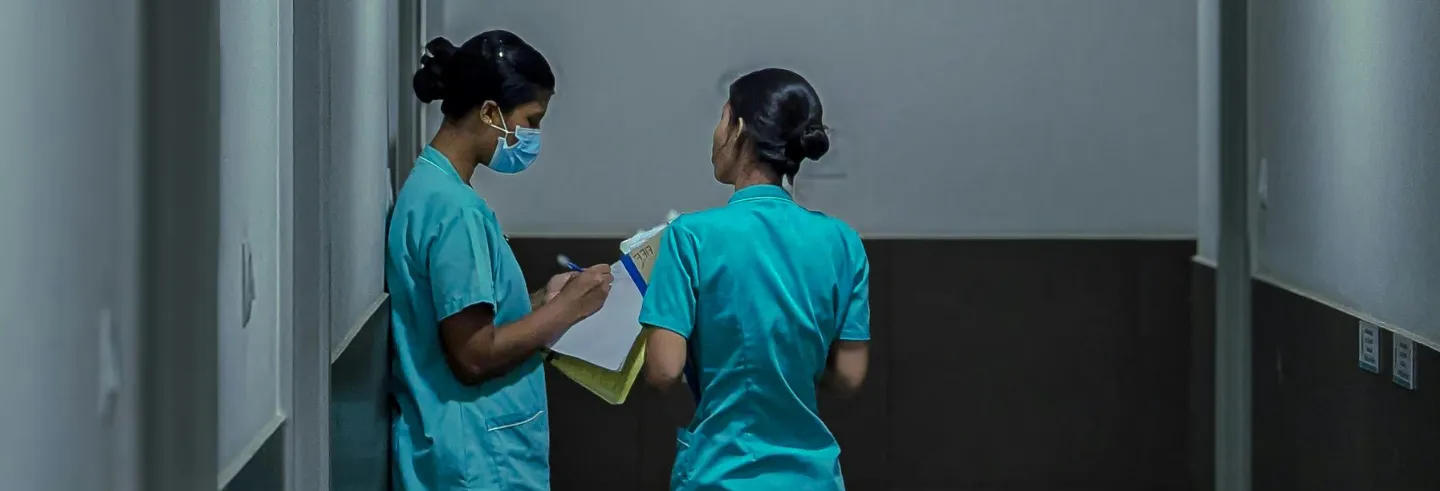One of the most significant developments in India over the past decade and a half has been a tremendous increase in the number of medical colleges. In 2011,
The policymaker’s answer to why we have so many medical colleges is that the country’s healthcare needs are huge due to its massive population. More colleges are the only way to remedy a shortage of doctors (more specifically, of biomedical or ‘allopathic’ doctors), the logic goes, a shortage that
Except, no such WHO recommendation exists.
Worse, the government’s pursuit of this chimeric ratio—much of it in opposition to medical education experts
When India Had a Problem of Plenty
Until fairly recently, expert opinion within and outside government held that India had
How did expert opinion in India go from assessing that India’s doctor-population was more than adequate to claiming, just within a decade, that it was so low it needed interventions on a major scale?
Notably, Hardiker did not make any claims about an ideal doctor-population ratio.
By the early 1990s, the country had attained a biomedical doctor-population ratio of 1:2300, a ratio which then policy experts deemed not only to be adequate, but even an excess.
WHO Recommendations and Caveats
Doctors are only one part of a region’s
Careful studies have avoided prescribing targets. When an international group of public health researchers based at Harvard University in 2004 published the Human Resources for Health: Overcoming the Crisis report, they “quantif[ied] health worker shortages not to seek numeric precision but to offer a sense of the scale of gaps. We use an arbitrary minimum worker density threshold of 2.5 workers (doctors, nurses, and midwives) per 1,000 population” [emphasis added]. Their ratio was derived from a choice to focus on two services as surrogate markers for adequate healthcare: immunisation (measles in this case) and skilled attendance at birth. After comparing countries across the world, they found that the prospects for achieving 80% coverage of these goals “are greatly enhanced where worker density exceeds 2.5 workers per 1,000 population”.
The WHO’s 2006 World Health Report took a statistical leaf out of this study and arrived at a “remarkably similar threshold” of 2.28 health care professionals per 1000 population to define health worker shortages.
There are three crucial points to note about the 2006 and 2016 WHO reports: they focused on an optimum density of health workers and not of doctors alone; they acknowledged that their definition of health workers (as consisting of doctors, nurses, and midwives) excluded other important worker groups like pharmacists and community health workers; and they emphasised that their particular definition of shortages (as workforce density below either 2.28 or 4.45 workers per 1000) did not eliminate the need for each country to make its own context-specific assessment about workforce sufficiency.
In either case, there was no
Inventing the Norm
If the WHO has never made any normative recommendations regarding the doctor-population ratio, why did Indian policymakers start claiming that they wanted India to achieve a 1:1000 ratio “as per WHO norms”?
The earliest official
The number of good medical teachers has hardly increased to keep pace with the number of colleges.
Despite the sensational departure from precedent, the idea of the 1:1000 doctor-population ratio would
Here is where things get curious. The expert group’s report acknowledged the 2006 WHO threshold of 2.28 health workers per 1000 population. Yet, a few paragraphs later, it stated that “we are still far from the WHO norms of one doctor per 1,000 population”. No source or reasoning was provided for this ‘norm’, but it is possible that the group arrived at this number by separating out the proportion of doctors from the broader health workers threshold.
Once the
The focus on increasing the number of medical colleges survived the change in government in 2014. Experts at the NITI Aayog, the successor to the Planning Commission, welcomed this push. Outside, others sounded cautious alarms. Madhav G. Deo, a member of the MCI, wrote in the Indian Journal of Medical Research that the policy was “ill advised”, claiming— in the kind of impertinent metaphors that veteran physicians often use—that it “would reduce the medical colleges to pathshalas (primary schools)”. The Indian Journal of Public Health worried about the “potential danger of compromising the quality [of biomedical education] further.”
Nevertheless, the state’s quantitative enthusiasm would not diminish, and as of July 2025, India has 780 medical colleges.
Reaching the 1:1000 target - again and again
In June 2022, the health ministry announced that the doctor-population ratio in the country had reached 1:834, “better than the WHO standard of 1:1000”.
The only way such a dramatic improvement
Considering the ground realities of India’s highly compromised education quality, it is clear that not many of the thousands of new medical graduates annually will contribute to public welfare.
To quote from the 2022 statement, “there are 13,08,009 allopathic doctors registered [...] Assuming 80% availability of registered allopathic doctors and 5.65 lakh AYUSH doctors, the doctor-population ratio in the country is 1:834.” Two years later, the ministry would make similar calculations and revise the ratio to 1:811, which is the current official figure.
The expanded definition was not a shot out of the blue. Many public health experts
The health ministry itself had, in the past,
In 2007, when India had only 269 medical colleges, the ministry had calculated a doctor-population ratio of 1:870 by accounting for AYUSH doctors. As late as 2015, the ministry used their numbers to project a doctor-population ratio of 1:855. It remains a mystery why AYUSH doctors were evicted from the equation after 2015, or what changed for them to be welcomed again in 2022.
The fog of statistical amnesia and about-faces doesn’t end there. Even though the union government patted itself for having handsomely surpassed the hallowed 1:1000 target, it continued to divert precious resources to
There is no sign the government intends to pause. In February 2023, then Health Minister Mansukh Mandaviya claimed that, though some doctors had expressed reservations to him about further increases in medical seat numbers, the government was committed to ensuring that Indian doctors provided their services not only in India, but across the world, and “kept the globe healthy through Heal By India”. For NITI Aayog’s Vinod Paul, the targets had shifted; the 1:1000 ratio “may suffice for low-income nations,” but for a country “aiming to be a global leader, we need 3 per 1,000 – this must be our goalpost by 2040”.
Such strange assertions, completely divorced from decades-old Indian public health precedent and wisdom, raise questions about why doctor numbers are considered an end in themselves, instead of as a means towards public well-being.
Unemployable doctors?
Many of the new medical colleges established since 2010 have been commercial enterprises, with the government handing over well-established public district hospitals to private entities as a concession for building colleges.
India’s medical education policy has, to the detriment of the public, become primarily a pursuit of numbers for numbers’ sake.
Other issues have been widely reported. Bribes have facilitated illegal
The number of good medical teachers has hardly increased to keep pace with the number of colleges. Most of the new colleges, including government
Almost every warning against this numerical obsession has been confirmed in inspections by the National Medical Commission (NMC). A news report quoted officials saying that a large number of medical colleges had “inadequate and poor infrastructure, absence of faculty during teaching hours, deficiency in clinical material [e.g., shortage in the number of cadavers for anatomy classes], and student grievances on issues such as ragging, inadequate hostels, and poor student-teacher relationship”. Despite these findings, the NMC has refused to make its college assessment reports available to the public.
Considering the ground realities of India’s highly compromised education quality, it is clear that not many of the thousands of
Reflections
The question to ask is: What does it even mean to have so many medical colleges? Without any meaningful development in patient rights and social justice on the horizon, what does it mean that lakhs more individuals from marginalised groups will be turned into ‘teaching material’ for students from these new—and often substandard—colleges?
India’s medical education policy has, to the detriment of the public, become primarily a pursuit of numbers for numbers’ sake. A country which, not too long ago, was committed to addressing the mal-distribution of doctors instead of furiously increasing their numbers, and which decelerated or even froze the approval of new medical colleges in service of quality or other public health goals, has today converted the intensive pedagogical labour of physician training into a monotonous factory-style task of doctor production. In the years to come, the people of India will be spending much time and energy just trying to recover from or ameliorate the negative repercussions of this numbers-based policy.
Kiran Kumbar is a postdoctoral fellow at the Center for Advanced Study of India, University of Pennsylvania. He is a public health expert and a historian of medicine and healthcare in India.









